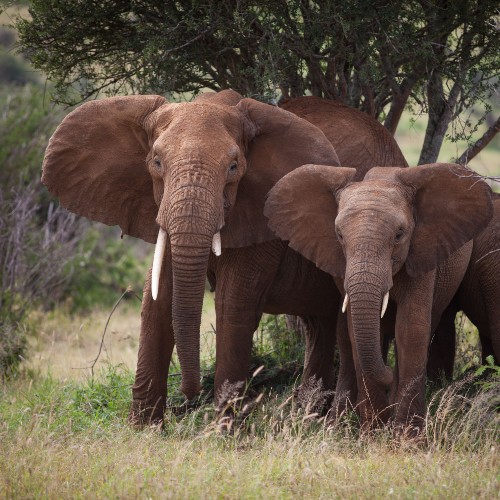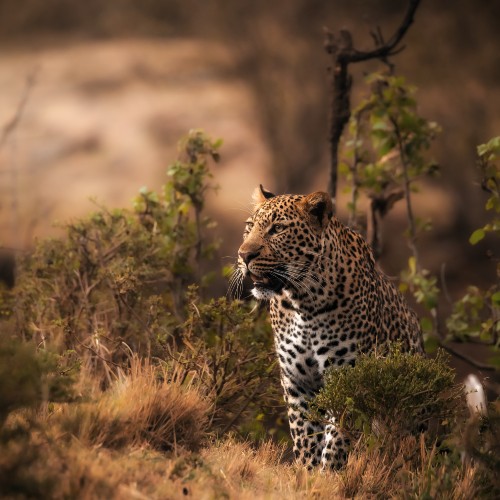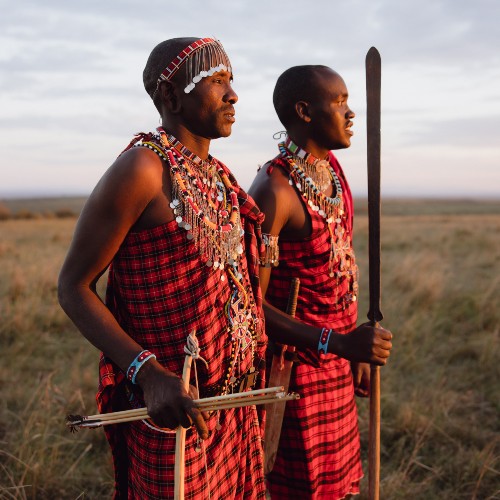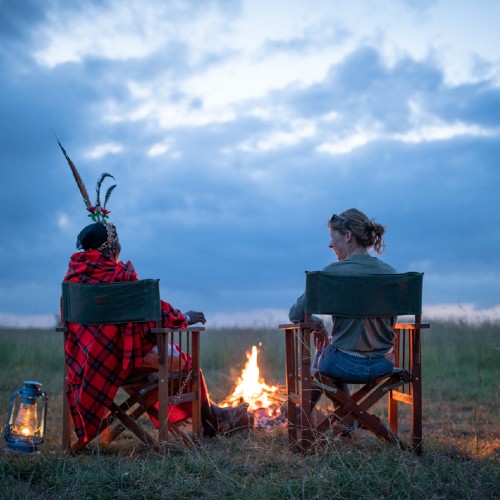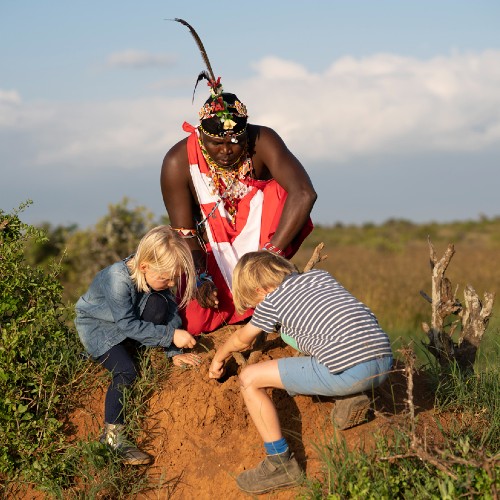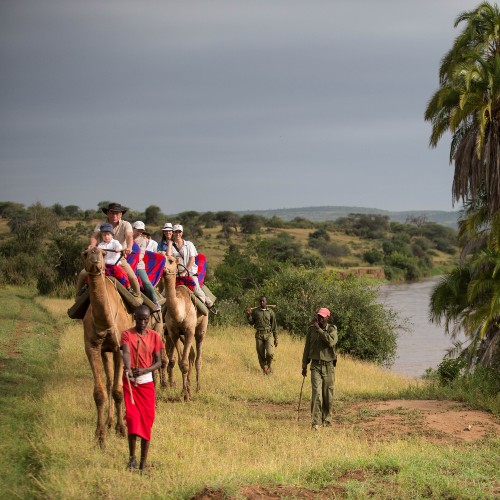How young is too young to safari Loisaba and the Masai Mara with kids? Steve Backshall – naturalist, explorer and TV wildlife presenter – recently travelled to Kenya to put that to the test with his five year old son, Logan.
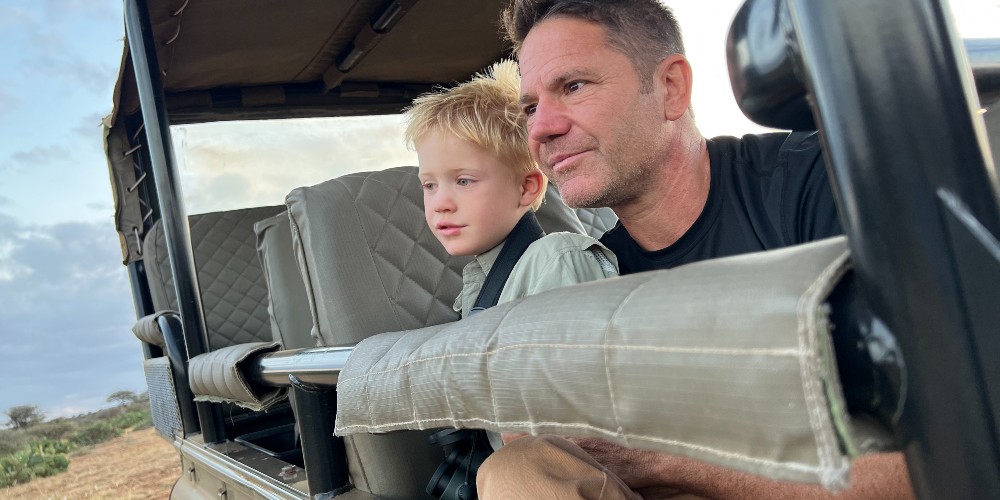
Steve Backshall and Logan, game drive, Loisaba Conservancy
The pride of lion gambol and frolic in front of us, cubs mere weeks old playing tug of war with the mum’s tail as the older cubs bat them with over-sized paws. They snarl, purr, and yawn, enjoying some family downtime from the daily grind of munching wildebeest. The group are tucked into a thicket of thorny vegetation, cautious, as one of their cubs was recently carried off and devoured by a predatory martial eagle. Beside me, my son is silent for the first time. What he sees is too much for him to process.
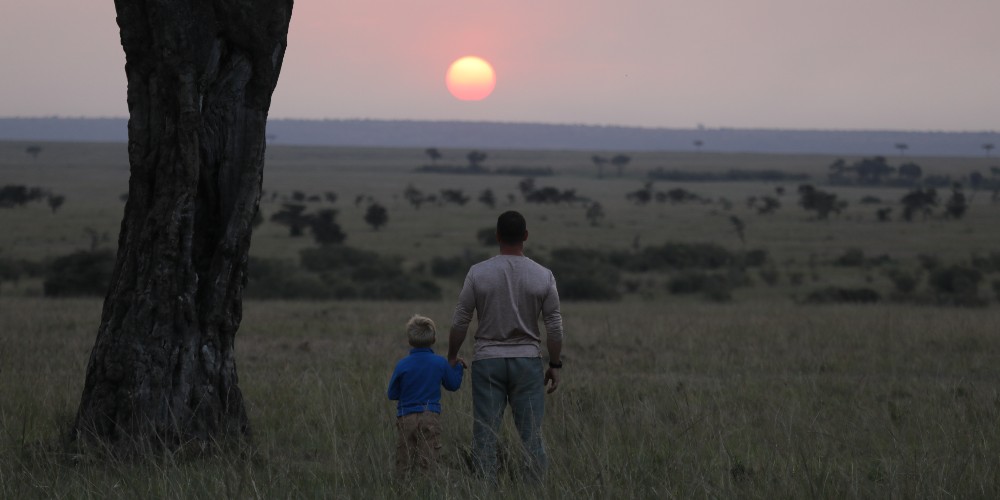
Sunset, Elewena Elephant Pepper Camp, Masai Mara
How young is too young for your first safari?
When I was around five or six I went on my first safari. I’m aware this sounds preposterously entitled, but my parents both worked for British Airways for over 40 years, and the job came with annual free flights. So we got a fortnight in Zimbabwe for less money than a trip to Blackpool, and the seeds of my love affair with Africa were sown!
Forty five years on I still remember it, right down to the names of the rangers who taught me my first tracking, and the sunburn scars that still dapple my shoulders. I believe, that one experience, was the springboard to my life spent with wildlife.
- Elephant family, Elewana Loisaba Lodo Springs
- Leopard, Elewana Loisaba Lodo Springs
A father and son safari is the highlight of my parenthood so far
This summer, with my wife Helen away training for the Paris Olympics, I found myself on full time daddy duty for two months. I wanted to take the kids for their first ever safari, but the twins – at three years old – were just too young. However, Logan my oldest, would have his fifth birthday in July. It was a gamble. Who knew how it would go? Would he be too young, impatient, overwhelmed, overawed, even bored? I decided that the once-in-a-lifetime opportunity to have that kind of one-on-one time before he started school outweighed the risks. So I called Nana, offloaded the twins and what followed turned out to be my highlight of fatherhood so far.
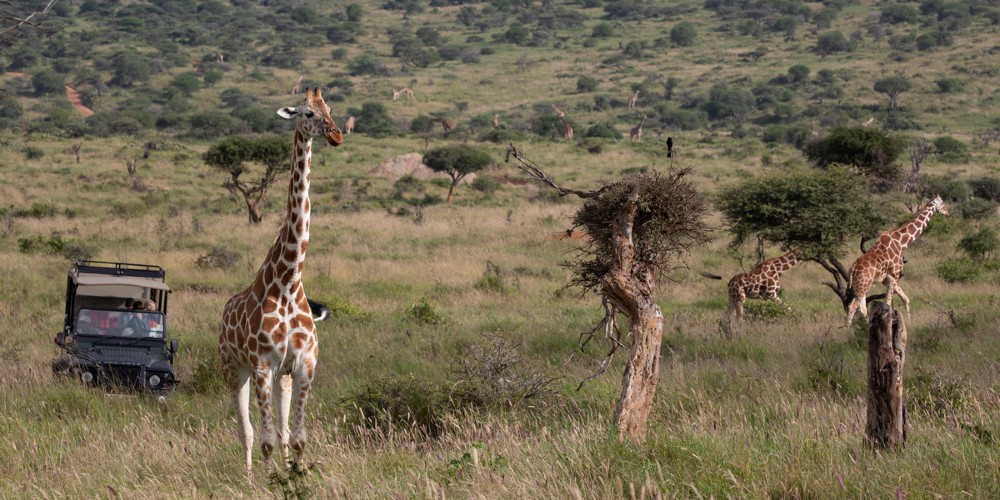
Reticulated Giraffe, Loisaba Conservancy game drive
Choose your destination and safari company with care
Normally I relish organising things like this myself, but with stakes so high I was taking no chances. I needed experience on the ground of places that could work for young kids; the antithesis of any expedition I’d organised before. The safari could not involve days with 10-hour game drives, spotting distant animals. It needed to be interactive. We had to be able to get out of the vehicles and physically do things on foot. We needed to trace our fingertips in lion footprints, smell the secretions of dikdik, and wake to the calls of the Go Away bird.
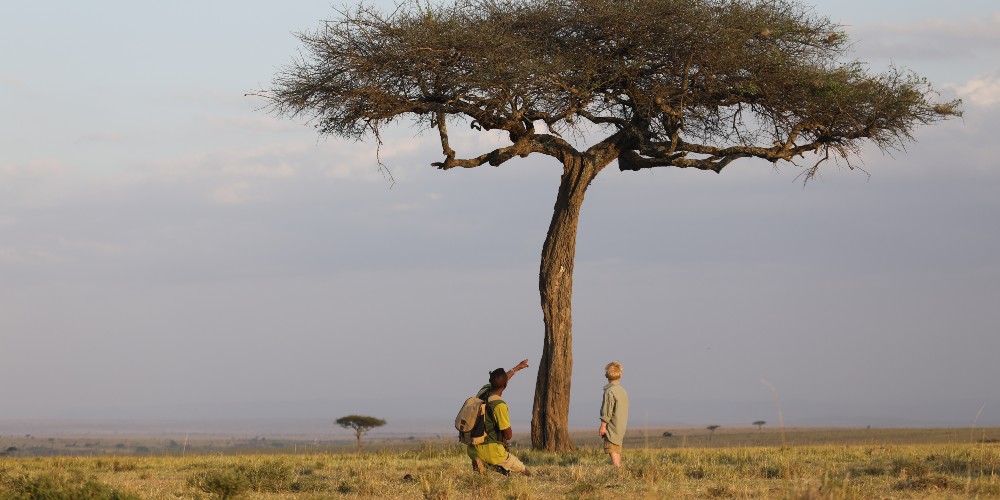
Logan with local guide, Elewana Elephant Pepper Camp, Masai Mara
Safari experts, Journeysmiths, recommend Loisaba and the Masai Mara with younger kids
A friend recommended Journeysmiths as a company who could get to grips with my very specific, and possibly weird, demands. Their suggestion was the Masai Mara in Kenya, which I know well, and a conservancy called Loisaba, which I didn’t know at all.
Logan and I set off from Heathrow full of expectation. I’d bought him classic safari khakis, including what he called his ‘Attenborough boots’, so he looked like a proper mini-me. And I’d trusted him with my battered old Swarowski binoculars, which in their day were worth as much as a second hand car. Was he the most overprepared four-year-old in history?
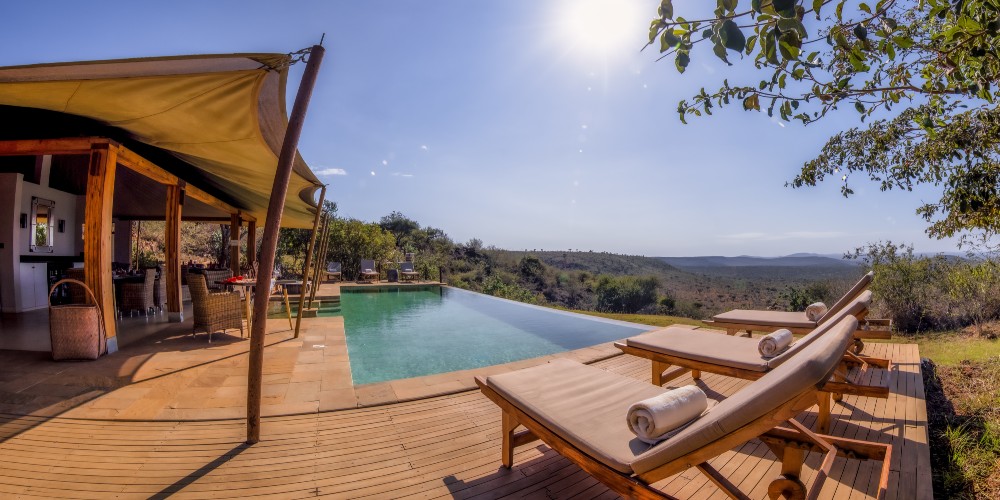
Elewana Loisaba Lodo Springs, Masai Mara, Kenya
Should you do a game drive with a grumpy five year old?
By the time we arrived at the Elewana Loisaba Lodo Springs camp, we’d been travelling for 20 hours. He was exhausted, grumpy and hungry. My instinct was not to push him to go straight out on a game drive. However, the glorious golden-hour light and abundant wildlife just wandering around camp made me chance my arm. We headed off in an open, high-sided safari vehicle, bumping over rutted roads which could rattle the fillings out of your teeth. Then, just minutes out of camp, a herd of elephants with young calves wandered right past the car, and I turned to Logan in wide-eyed excitement. He lay, eyes closed, mouth open, loudly snoring.
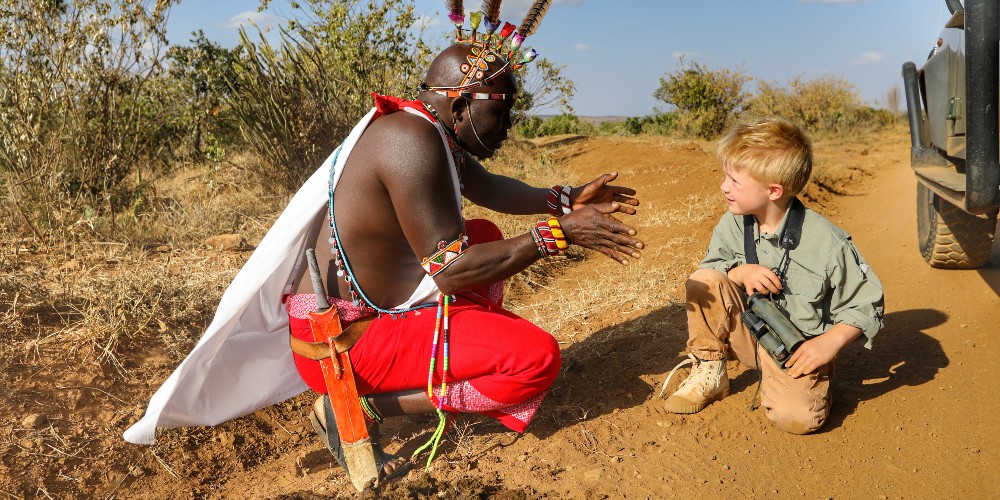
Logan hanging on Brown’s every word
Get ready for kids to fall in love with local guides
When he woke, it was to our local guide, ‘Brown’, jumping down to examine droppings and tracks in the roadside dirt. Logan started to read the story left behind by the animals. Brown had an easy smile, an unparalleled knowledge of flora and fauna, and a lovely calm way of explaining things and answering questions. Already Logan was limpeted to him, listening to everything he said as if it was sacred gospel. And, much as it tore at my heart to have someone else doing my job for me, I stood back and snapped photos; watching my boy bewitched, intoxicated by learning, by nature, by Africa.
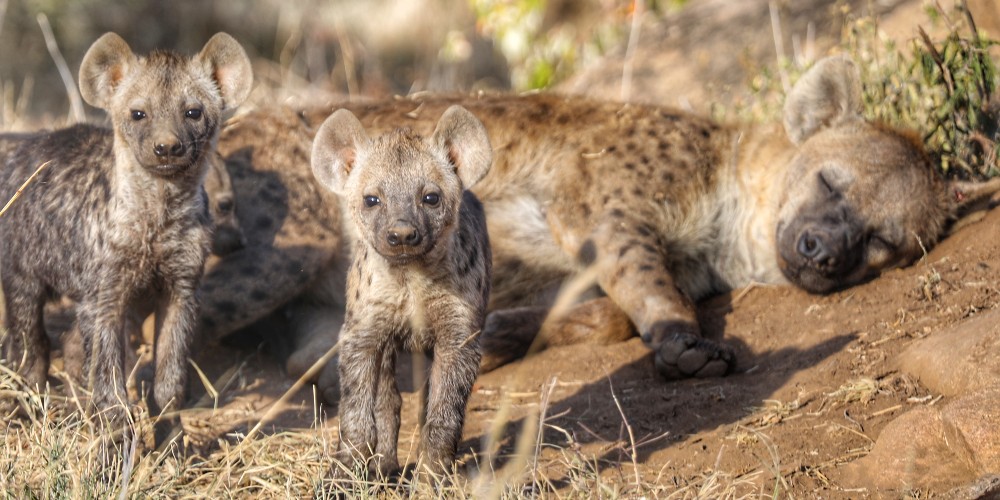
Too tired to care, close up with hyena, Masai Mara
Just 10 minutes later, and we had followed the tracks to their source: a hyena den with two week old pups, wandering around their eyes barely opened, nosing up to us with curiosity as their parents looked on suspicious, but too tired to do anything about it.
As we revelled in the moment, impala started barking nearby, an alarm call. “Leopard,” Brown said. “There is a leopard there, we should go.” I raised an eyebrow. Really? They could be alarm calling at anything. And we had this amazing hyena experience right here. But OK, he was the local knowledge, so we went.
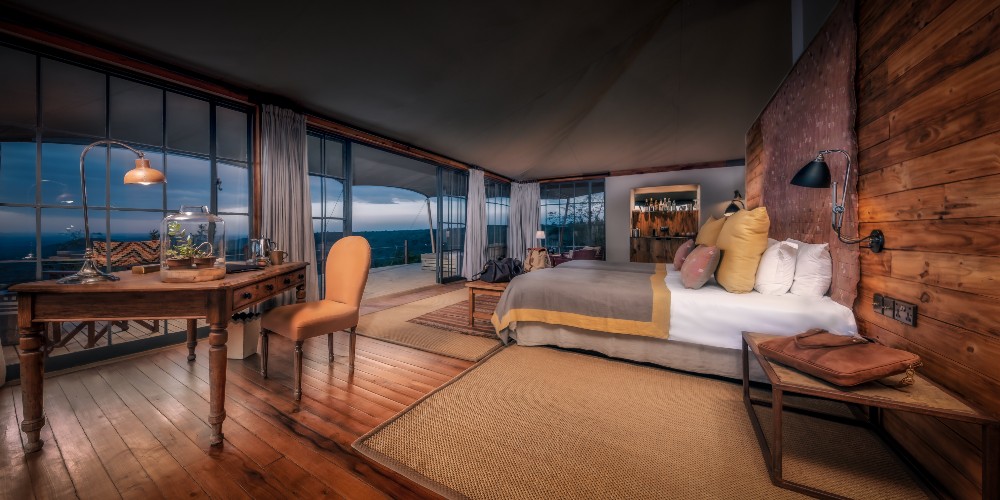
Room with a view, Elewana Loisaba Lodo Springs
Always listen to your local guide
Just minutes later, we were sat directly under a tree, with a leopard lounging in the branch right over our heads, devouring the still warm impala it had dragged up there. We’d missed the hunt by minutes. This was the first big test, would Logan be saddened, frightened or sickened by death, and the sight of blood? Instead, he seemed to get a year of life lessons all in that one experience. The circle of life right there; red in tooth and claw before him.
On the night of his fifth birthday, we stayed at Elewana Loisaba Star Beds, where they rolled our bed on wheels out under the stars. We fell asleep to the boisterous bellowing of hippo, and chuckling of hyena. Middle of the night and Logan shook me awake. The booming roar of lion was rattling around the hills, seemingly just metres away. As we lay there thrilling to the most awesome sound in the world, shooting stars coursed across the firmament, and we felt as if we’d woken in the pages of a Wilbur Smith paperback.
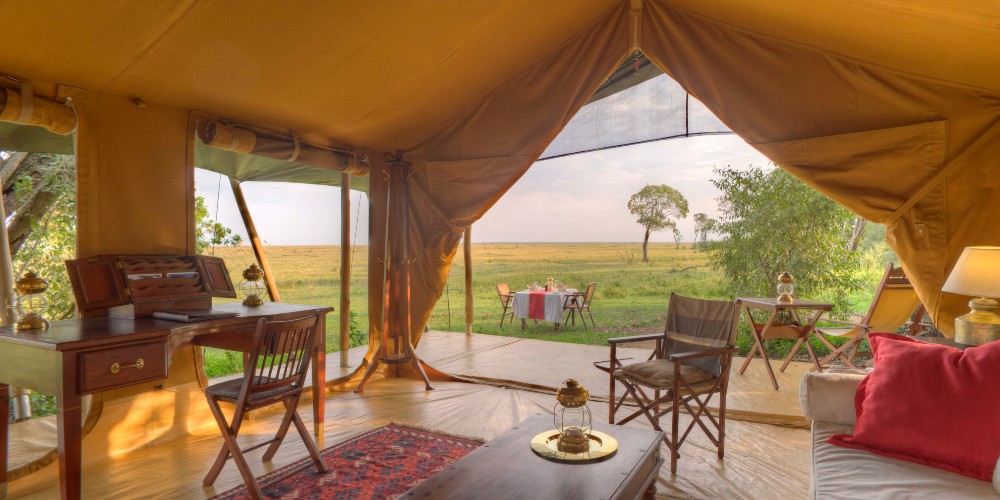
Living area, family tent, Elewana Elephant Pepper Camp
Prepare to be awed by Elewana Elephant Pepper Camp
It seemed impossible that Loisaba could be equalled, but Elewana Elephant Pepper camp in the Masai Mara offered something else entirely. It was the camp itself that will live long in the memory: tented and without fences or boundaries of any kind.
Elephant just strolled past our tent as we sat playing Guess Who and doing writing practise. Cheeky Vervet monkeys raided our tent for fruit whenever our backs were turned. At night we could hear hippo munching the grass around us with a noise like churning washing machines; just a hair’s breadth of canvas between us and the most frightening animal on earth. Every single wildlife wish Logan could conjure up was almost instantly granted. Want to see a Cheetah? An hour later we’re sitting in front of one. A Nile croc? Next thing we know breakfast is being served under a giant acacia at a riverside with crocs basking mere metres away.
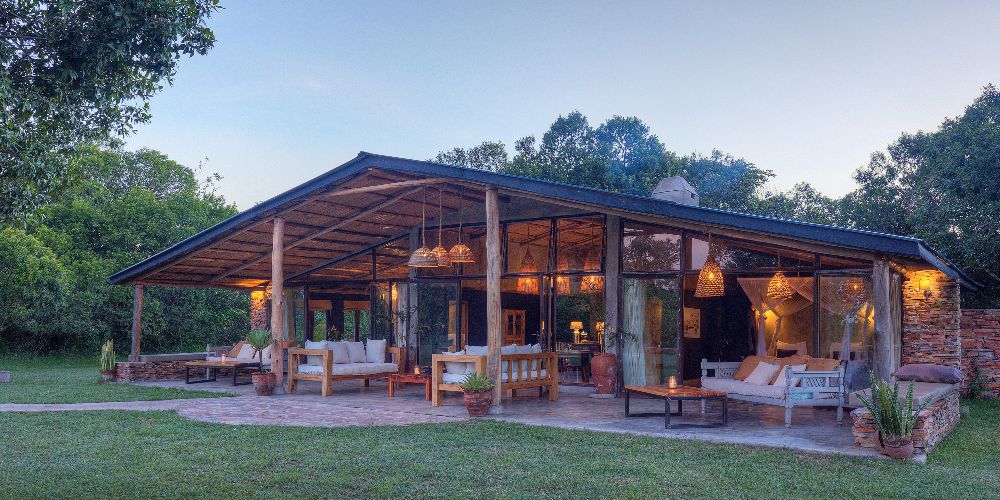
Family cottage, House in the Wild
House in the Wild brings the true Masai Mara magic
Our last stop was House in the Wild in the Enonkishu Conservancy, on the northern boundary of the Masai Mara ecosystem. It was magical. This is the location most set up for families, with a lawn to run riot on, as well as a swimming pool where kids can splash about while safely watching grazing warthog and gloriously farting hippo.
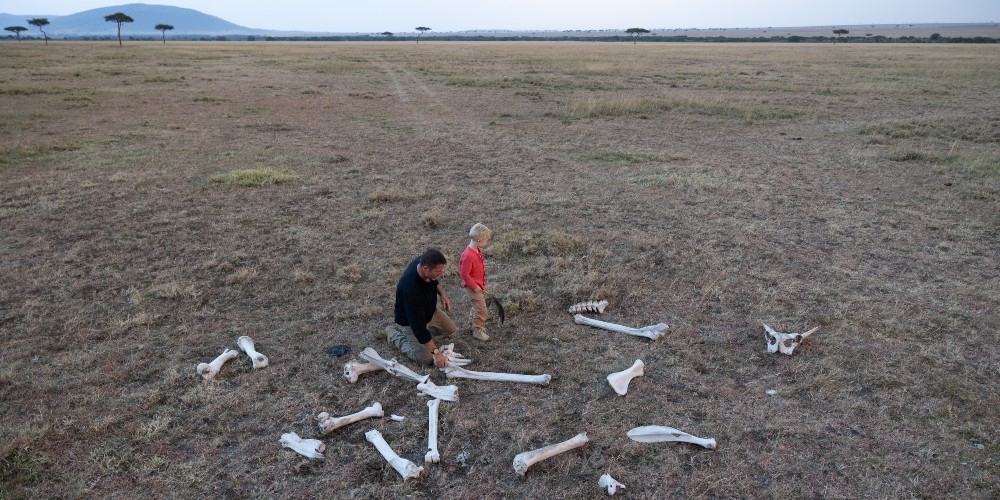
Giraffe bones jigsaw, House in the Wild
Fresh hippo dung reminds you this is not your local park
Walking trails take you out to view points over the river, where Logan and I saw giant monitor lizards thundering off into the bush. The trails seem super-safe, despite fresh hippo dung on the trees and their footprints in the dirt. Although, they only walk these trails occasionally by night, and its a risk I’d barely think about myself, that takes on extra significance when the most important person in the world is holding your hand. In fact, in all these venues you’d need to be certain your children know that strict commands have to be obeyed. So they couldn’t have a raging tantrum and run off into the bush or down to the riverbank to sulk. This is not the local park, there are rules that have to be listened to, and the animals really can eat you.
That said, the most memorable thing about House in the Wild is the hands-on feel of the wildlife encounters. For sundowners each evening we’d head out to where the Masai Mara meets grazing lands. Spotting bat-eared foxes in the termite mounds, chasing poo-rolling dung beetles, and searching for rock pythons at the swamp edge. On one magical dusk, we reconstructed an abandoned giraffe skeleton like the world’s biggest and best jigsaw puzzle, as the sunset turned the sky impossible shades of vermillion and gold.
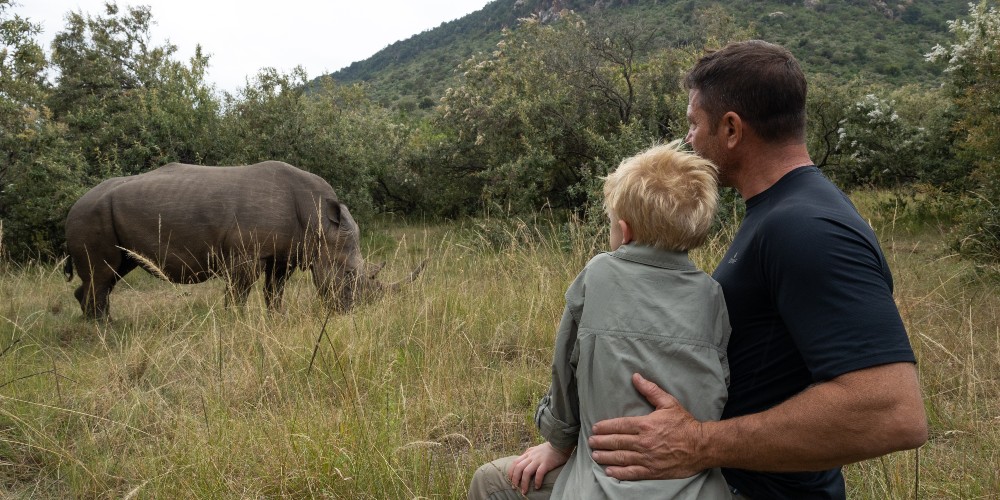
Rhino, House in the Wild, Kenya
Expect a few difficult questions from your kids
Also nearby was the most bittersweet moment of the whole trip: two rescued rhino kept in a wild, but protected environment. There were four originally, but the other two were poached, despite a 24/7 armed guard. Although the two remaining animals are free to roam, you can still track them on foot, and even walk alongside them.
Standing with Logan, metres away from these ancient, lumbering miracles of nature, was a moment I’ll never forget, but one tinged with sadness. Eventually I had to try and explain why these animals were under armed guard or why were they were here at all. The situation with rhino poaching is one of the most insane in modern conservation, with all existing rhino species worldwide now teetering on the brink of extinction simply because their horn is so prized in traditional medicines. This horn – formed of keratin, same as our hair and fingernails, and of no medicinal value – is more valuable by weight than gold. Try explaining any of that to a child. See the total incomprehension in their eyes, along with that first kernel of understanding quite how impossibly cruel, short-sighted and stupid our species can be. It is gut-wrenching.
- Maasai Warriors, Elephant Pepper Camp
- Relaxing by campfire, Loisaba
How ethical is a Masai Mara safari these days?
Anytime I found myself questioning our choices, and the ethics of what we were doing, the answers came quick and fast. The Masai Mara could be said to be the birthplace of high-end tourism, originating with pith-helmeted colonial visitors coming here to have lavish banquets under the desert date trees as game swept before them.
Though any concerns that holidays here now might have the same uneasy post-colonial feel, is offset by efforts being made to put the stewardship and rewards from these reserves back into the hands of indigenous landowners. Outreach and education programs aim to bring young people into the conservation fold, and ensure that all can enjoy the natural wonders. No longer are tribal chiefs paid a risible rent for their lands, and locals offered only menial jobs. Now the rightful landowners are properly engaged in the success of their land. And with locals invested in the jewels of their parks, poaching is less omnipresent in the Masai Mara than in many other parts of Africa.
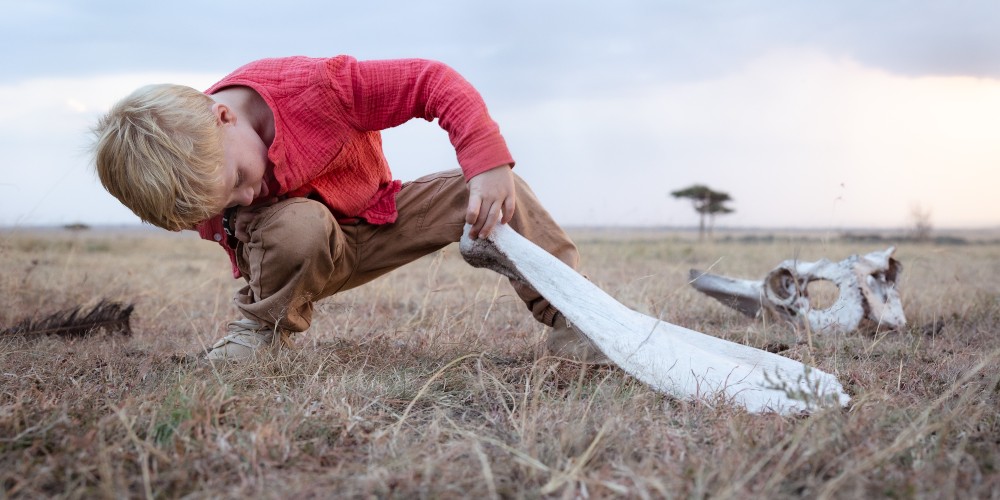
Logan, House in the Wild, Masai Mara
Would I recommend a safari with a five year old?
So, would I recommend a safari to any parent of a five-year-old? Well it depends on your youngster, on their passions and their patience. You know your child better than anyone else. If they’re nervous, have lots of tantrums or might freak out mid-game drive, then it could be a total nightmare. Depending on where you stay, you could also be sharing your vehicle with other people (although I’d seriously recommend booking a private one), and could risk ruining their experience. Plus your kid cannot freak out when there are lions or elephants around. That can be genuinely dangerous.
Be realistic; don’t be out on sunrise to sunset safaris every day, or they’ll lose interest. Make time for other things. Bring games and toys, and don’t imagine the clock ticking any minute you’re not out watching the animals.
- Guided bush walks, Loisaba
- Camel Trekking, Loisaba
Treat the African sun like some kind of death-ray!
Be aware also that a fleeting glimpse of a rare antelope may not be as special to them as catching a praying mantis round the lights at night, or going out UV lamping for scorpions. Treat the African sun as if it is some kind of death-ray. Be militant about sunscreen and covering up or kids will burn. Lodges do have some sundry items you might need, but everything kid-wise, from nappies to familiar snacks you’ll have to bring out with you.
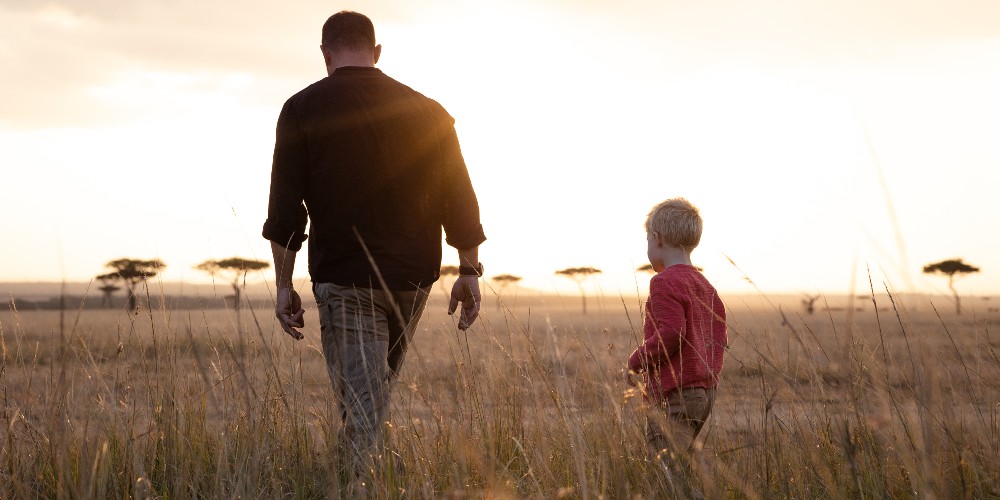
Steve and Logan, Masa Marai, Kenya
A Masai Mara safari has the potential to be world-changing for children
If you’re in doubt, wait a few years. These reserves are 50 years old, so they’ll be around a few years yet. And lastly, there is no cheap way of doing a good safari, so save this one until you’re sure it’s going to be a hit. But, if you have the kind of youngster that would embrace the challenges, the experience will be world-changing for them, and you. I sincerely hope it has been for Logan, and that he – like me – will have a piece of his heart that is forever Africa.
How to plan a Masai Mara family safari
How to get there
Direct UK flights to Nairobi take from 8 hours, 56 minutes
How to follow Steve’s safari itinerary
A 7-night family safari with Journeysmiths includes all meals, game drives and activities. Airport transfers, internal flights and Nairobi B&B stay are also included. International flights and some activities are not included.
Four Points by Sheraton Nairobi Airport – one night
Elewana Loisaba Lodo Springs Camp – one night
One night – Elewana Loisaba Star Beds
Elewana Elephant Pepper Camp – two nights
House in the Wild – two nights
From £22,340 for a family of four (2 adults, 2 children under 12)


